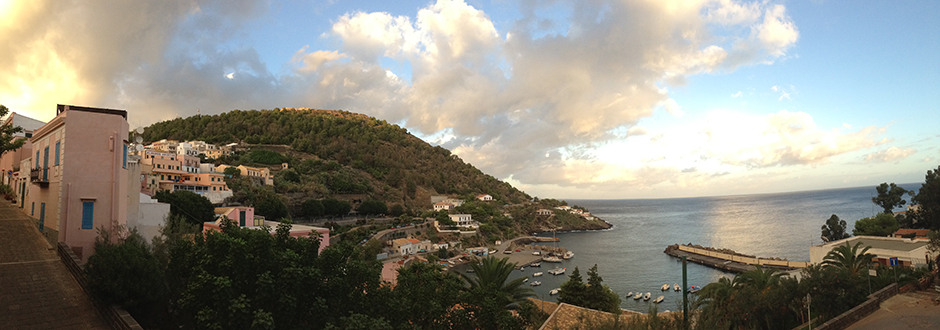The Island /Ustica
 The ancient romans named the island “Ustica” (from ustum = burnt), while the greeks called it Osteodes (Οστεώδες = burial site), as mercenaries were supposed to die here from thirst and hunger. Some authors also consider Ustica as the home of the Sorceress Circe, cited in Ulysse’s Odyssey, who used to transform her visitors into pigs.
The ancient romans named the island “Ustica” (from ustum = burnt), while the greeks called it Osteodes (Οστεώδες = burial site), as mercenaries were supposed to die here from thirst and hunger. Some authors also consider Ustica as the home of the Sorceress Circe, cited in Ulysse’s Odyssey, who used to transform her visitors into pigs.The first settlement in Ustica are reported from the Paleolithic, archaeological research has brought to light an ancient christian village. Tombs, caves and ship wrecks indicate that several Mediterranean populations and culture landed here, including Greeks, Phoenicians, Romans and Turks.
During the VI century, a community of the Benedictine order moved to the island, but soon left due to the war between Christians and Muslims. During the middle ages, sea pirates were based on the island, making useless any attempt of colonising it.
In 1759, Ferdinand II of Spain finally colonised the island and build two guard towers, Santa Maria and Torre Spalmatore, that were part of the observation and protection system of towers located all along the Sicilian coastline. With the towers, new houses and rainwater collection tanks were built, forming the first village. People from Palermo, Trapani and the eolian island, together with few hundred soldiers, moved here shortly after.
During the Spanish kingdom in Sicily, Ustica was mostly a destination for the exiled, and remained so through the kingdom of the Savoia (after the Italian unification in the mid 1800). Important politicians and philosophers were sent here in exile, like Amadeo Bordiga, Nello Rosselli, Antonio Gramsci and Ferruccio Parri. In addition, political prisoners during the Italian war campaign in Libya (in the 1930‘s) were bought here. Finally, in 1941 the island was freed and started a new phase of development.
Today about 1327 people live on the island. The island is located about 67km from Palermo and 95km from Aliculi (the closest eolian island). The island has a total surface of 8.65 km² with a coastline of 12km. The island is of volcanic origin, similarly to the eolian islands, and it retained two ancient volcanoes that now forms two small hills (Punta Maggiore, 244 m; Guardia dei Turchi, 238 m). The island also presents many caves, high cliffs and rocky shores.
The island has a weather station, officially recognised from the international meteorological organisation. The climate is temperate/mild, with annual average rainfall around 505mm. The vegetation is typical of volcanic islands, with common Mediterranean species as well as cultivations of olive trees, almond trees and vineyards.
Ustica is also knows to be the natural habitat for the Sicilian bee (apis mellifera subsp. sicula).
The island has both a marine protected area and a terrestrial reserve, effectively protecting both land and sea.
Links:
